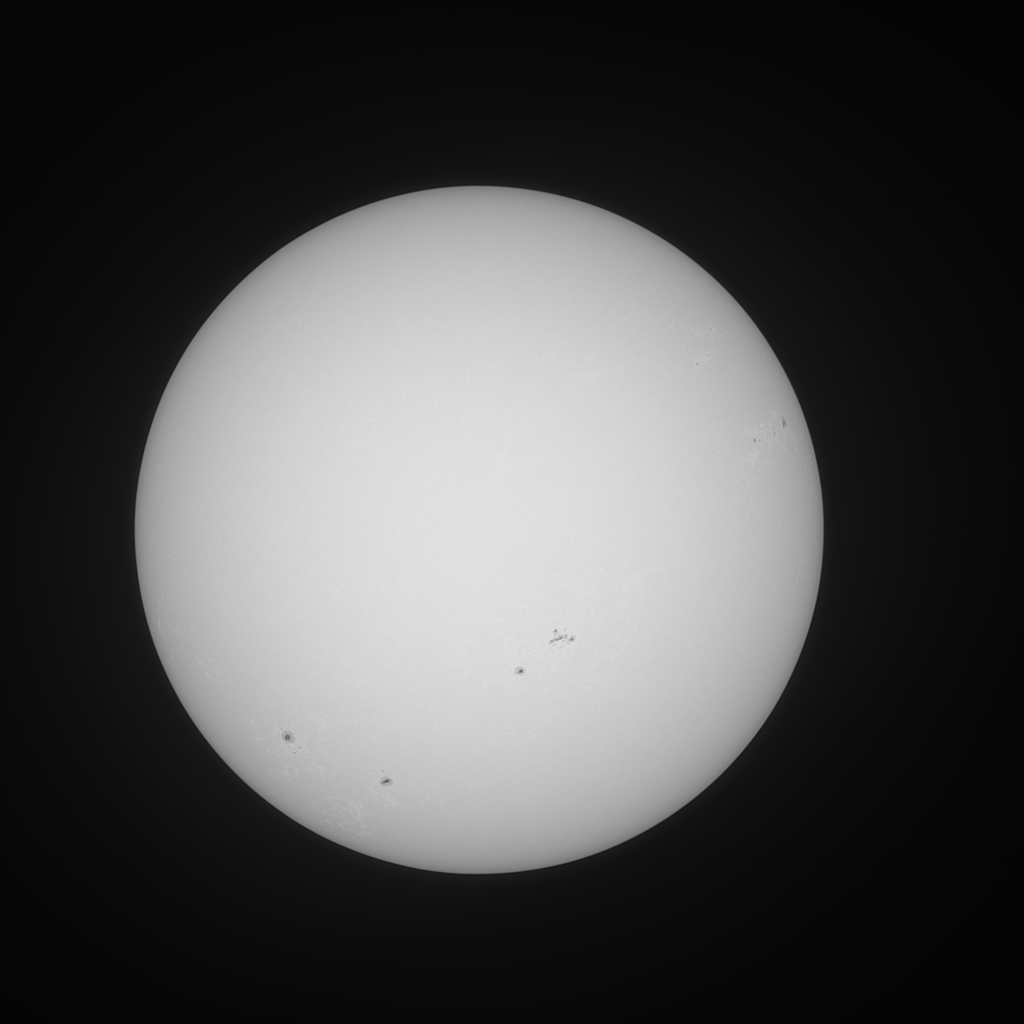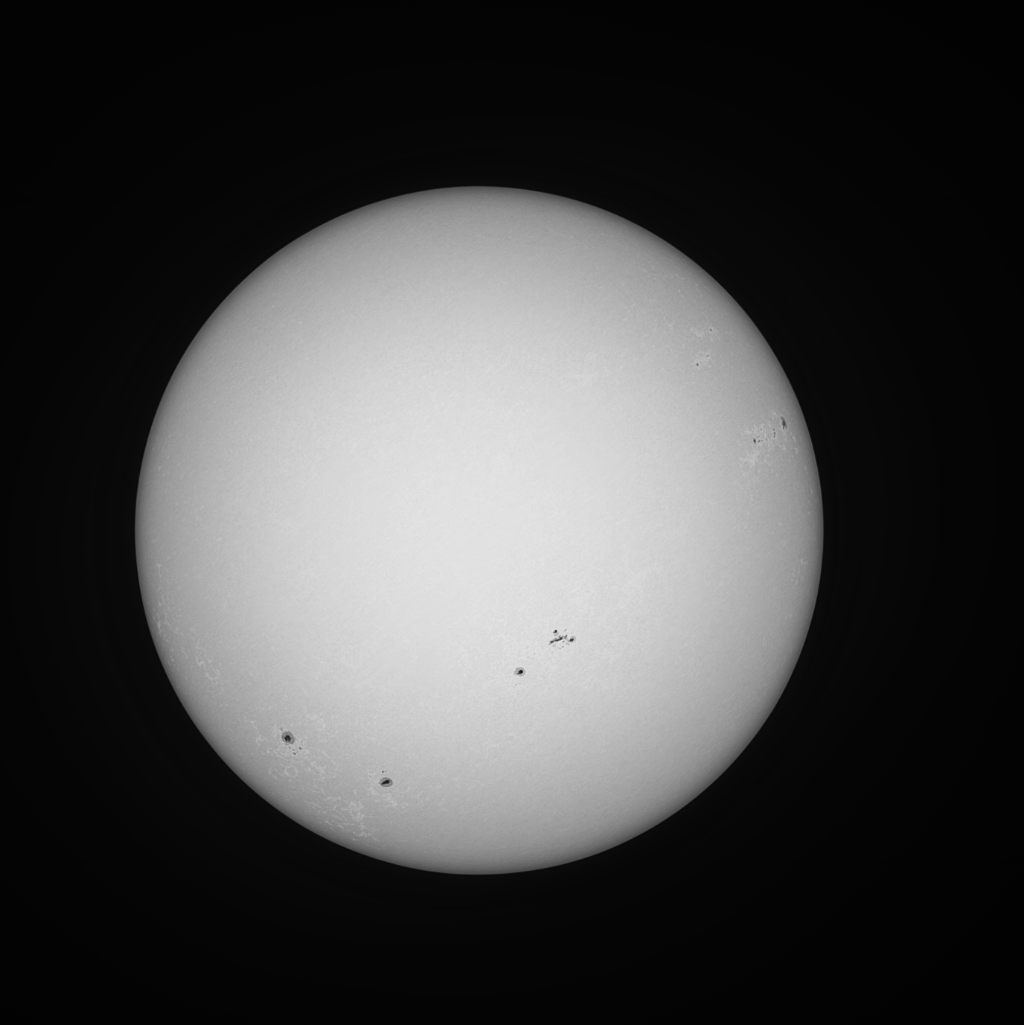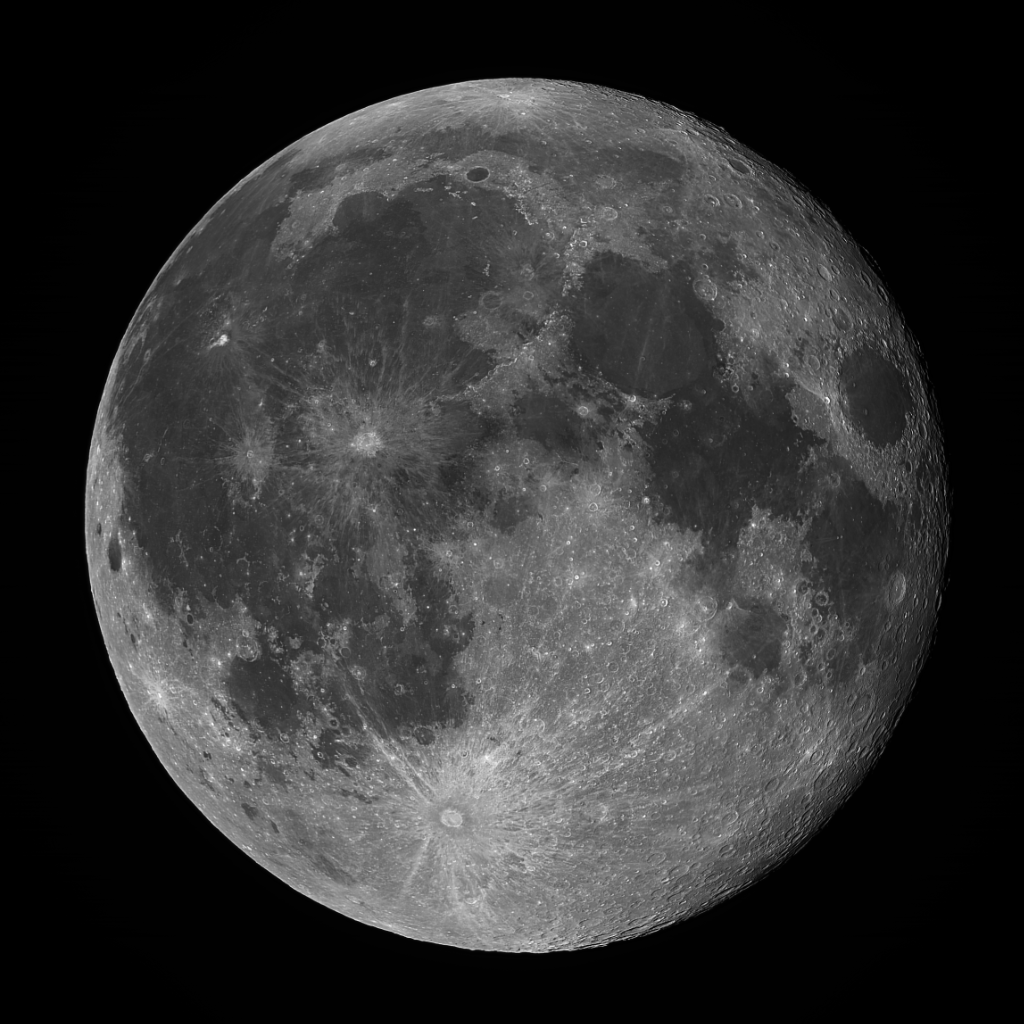The Sun
Session Data
- Date: 18/9/2024
- Time: 13:40 – 14:40 UT
- Seeing: III. OK – Moderate
- Transparency: III. Clear with slight haze.
- Temp: 19 C,
- Air Pressure: 1027mb
- Humidity: 79%
- Dew Point: 15C
- Wind Speed: 2mph
Scope: TMB 80 f/6 Camera: ZWO ASI 183MM Pro, Astronomik 420nm Pass filter and SBIG G Filter. No Darks or Flats taken.
Just a small experiment to compare the Astronomik 420nm Pass filter and the SBIG G filter for Solar work. The images were captured using Sharpcap’s planetary Livestack tool and I used the same settings for both noise reduction and wavelet sharpening the same for both captures.

Above using the Astronomik 420nm Pass filter

Above using the SBIG G Filter
Not the result I was expecting. Conclusion is that the Green filter provides more contrast and retains the granularity.

But when you do a little extra work on the 420nm pass filter version in Affinity, the brighter plage’s seem to have just a little more detail and the disk has a more three dimensional look to it.
I think a better test would be between the ‘G’ and a Baader 7.5nm Solar Continuum Filter (540nm) – the later of which, I don’t have at this time.
L1 Earthshine
Session Data
- Date: 18/9/2024
- Time: 20:41 – 22:25 UT
- Seeing: IV. Poor – Constant – Slight
- Transparency: III. Clear with slight haze.
- Temp: 14 C,
- Air Pressure: 1025mb
- Humidity: 85%
- Dew Point: 12C
- Wind Speed: 11mph
- Average Seeing: No data
- Average SQM: No data
Scope: TMB 80 f/6 Camera: ZWO ASI 183MM Pro, Astronomik 420nm Pass filter. No Darks or Flats taken.

Managed to get out and try my new 742nm IR pass filter last night. I’m following in one of our Club members footsteps and want to try and image all the Lunar 100 objects. This is No1. The whole caboodle.
I’ve never really looked at a full Moon quite so intensely as even with an ND filter, it hurts your eyes and generally at this phase never looks that interesting. However, the length of the ejecta material coming from Tycho going just past Mare Nectaris is huge. Using the measure took in Virtual Moon Atlas, this comes out at 1574Km long.
The other stand out features are the intricate web of ejecta from Copernicus to the North and the smaller companion Kepler to the West.
The image above was captured using Sharpcap’s Planetary Live Stack mode. For EAA this has been a revolution as now we don’t have to capture a .SER file and do all the Autostakkert and PI processing post the observation. It’s now all now done live an at the time.